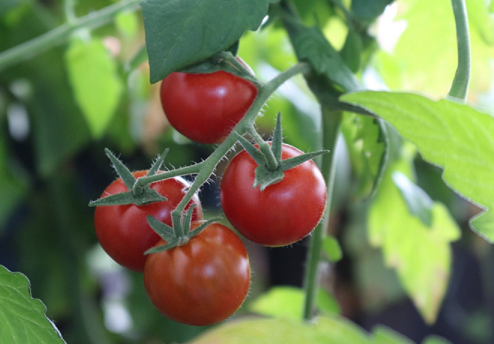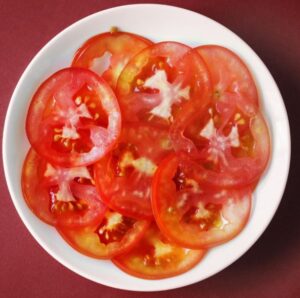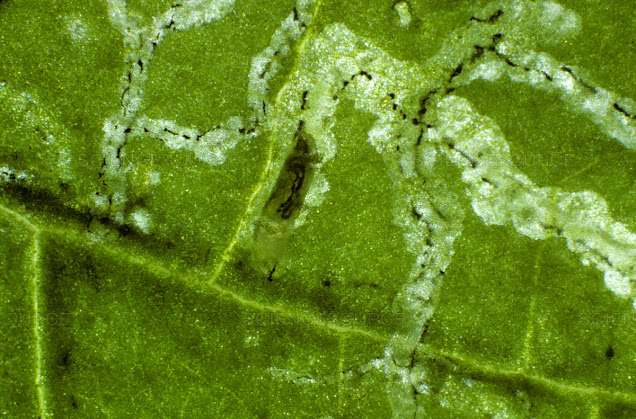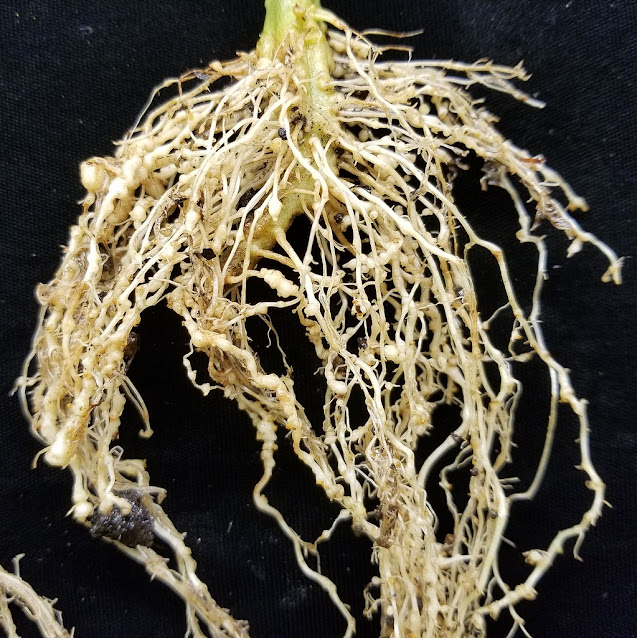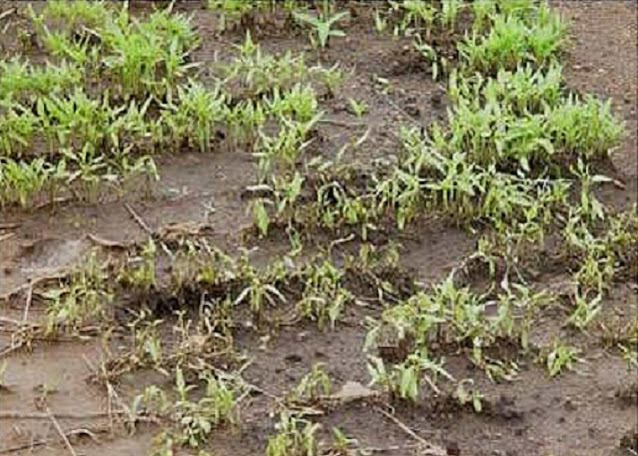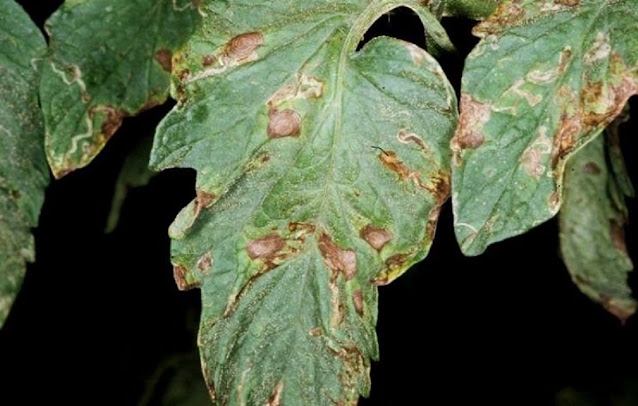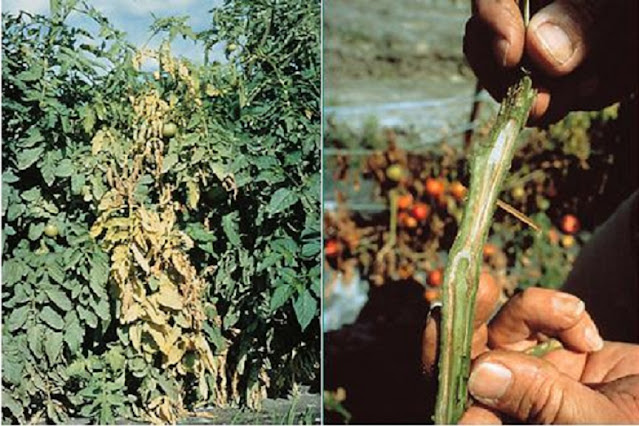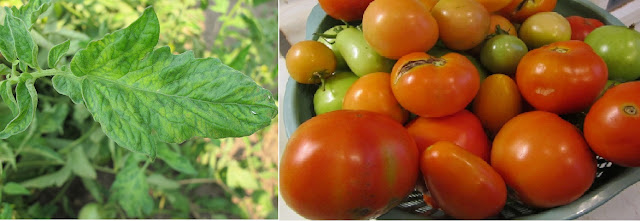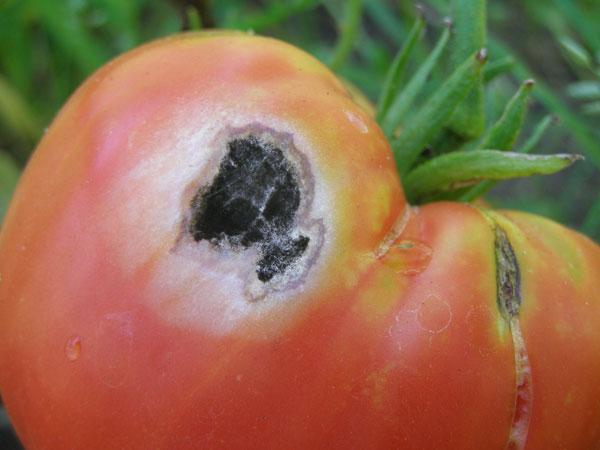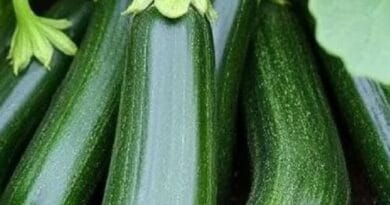Cultivation of Tomato ; Lycopersicum esculentum
Cultivation of Tomato: Grown in a variety of climates and regions, using traditional and protected farming methods.
Nutritive Value of Tomato ;
| Typical Values | per 100g |
| Energy | 20kcal |
| Fat | 0.3g |
| Saturates | 0.1g |
| Carbohydrates | 3.1g |
| Sugars | 3.1g |
| Fibre | 1.2g |
| Protein | 0.7g |
| Salt | 0.02g |
 Minerals and vitamins. Numerous vitamins and minerals can be found in tomatoes:
Minerals and vitamins. Numerous vitamins and minerals can be found in tomatoes:
Vitamin C: This vitamin is an antioxidant and a necessary nutrient. About 28 percent of the Reference Daily Intake (RDI) can be obtained from a single medium-sized tomato.
Potassium: Potassium is a necessary mineral that helps prevent heart disease and regulate blood pressure.
Vitamin K1; Vitamin K, also known as phylloquinone, is essential for bone health and blood coagulation.
Vitamin B9 (folate); Folate, one of the B vitamins, is necessary for healthy cell and tissue development. Pregnant women should pay special attention to it
Vitamin A, which is found in tomatoes, helps in preventing macular degeneration and improves vision. Excess of beta-carotene in the body can be converted into vitamin A (a potent antioxidant).
Climate Requirements for Tomato Cultivation ;
Soil Requirements for Tomato Cultivation ;
Seed rate ;
Time of Tomato Planting;
1) Tomato crops can be grown in any season because of their day-neutral Characteristics.
2) Three crops of tomato are taken in the northern plains, but due to the prevailing frost conditions in the northern plains, the rabi crop is not so fruitful.
3) The best time for tomato transplantation is the month of
- July for the Kharif crop,
- October and November months for the rabi crop,
- February month for the Zaid crop.
4) As there is no danger of frost in the southern plains, Tomato transplanting can be started in the month of December-January as a first crop. Second transplanting can be done in the month of June-July, and the third transplanting can be done in the month of September-October As per the prevailing irrigation facilities.
Raising seedlings for Tomato Cultivation ;
1) Seedlings are grown for one month by transplanting raised beds of 60-100 cm width and of convenient length.
2) Soil solarization of nursery beds is done by covering them with white transparent polythene sheets for one month, and it should be done in the hot summer months. It will destroy the major disease-causing microorganisms like fungi, bacteria, and nematodes, as well as kill the insects and seeds of weeds.
3) For a one-meter square nursery area, apply a dose of 5kg well-rotten FYM and a 20 g dose of each N, P, and K fertilizer, and for managing the disease and pest of the nursery, apply the 2.5g carbofuran or 200 g of neem cake along with 10-25 g Trichoderma.
4) For nematodes, apply the neem cake /castor cake/neem leaf/ castor leaf/ Pongamia leaf/ calotropis leaf has to be incorporated @ 400 g per square meter at the time of preparing the nursery beds.
5) Mulch the seedbeds after sowing with green leaves, and irrigation must be given with a rose regularly daily in the morning till proper germination of seeds. Mulch must be removed immediately after germination of the seeds.
7) Protect the nursery bed from the damage of virus-transmitting insects with the help of a fine nylon net.
Seed treatment ;
1) To avoid damping-off disease, treat the seed with Trichoderma @ 5-10 g/Kg seed or carbendazim 2g/Kg seed.
2) The treated seeds are dried in the shade for 30 minutes and then sown sparsely along the lines at ½ cm depth and then covered with the topsoil.
Transplanting ;
Spacing Requirements in Tomato Crop ;
Transplanting the Tomato Crop ;
The transplanting is done in a small flatbed or a shallow furrow, depending upon the availability of irrigation.
In the case of heavy soil, Plants are usually transplanted on the ridges, and during the rainy periods, ridge transplanting is also advantageous.
The seedlings of the indeterminate varieties/hybrids must be staked by using bamboo sticks of about two meters in length, or may be planted in a broad ridge of 90 cm width and 15 cm height. The seedlings that are planted in the furrows must have a spacing of 30 cm to allow the plants to spread on the broad ridge
Manuring Requirement for Tomato Cultivation ;
Irrigation Requirement for Tomato Cultivation ;
Weed Control in the tomato crop ;
Plant Protection of the Tomato Crop ;
Insects ;

It is polyphagous, attacks most of the cultivated crops, is a major pest of tomato, and is widely distributed throughout the country. Young larvae borer feeds on tender foliage of the plants, while in the advanced stages borer attacks on the fruits of the tomato crops. The larva bores circular holes in fruits of the tomato crop.

1) For killing the early stages, larvae Spray 5% neem seed kernel extract
2) Deploying of 15-20 bird perches ( usually T shaped) per ha helps in inviting insectivorous birds.
3) Apply a Spray of NPV @ 625 LE/ha during the evening hours.
4) Mixed the Jaggery @ 1 kg, sandovit or Teepol(100 ml) with NPV and as per need basis spray 2 ml Endosulfan, Chlorpyriphos or Quinolphos per litre of water
Chopped leaves of Pongamia or Crotalaria application reduces disease severity caused by the nematode.
5) In some areas Farmers use garlic chilly extract and slurry of cow dung + urine for protection against pests and diseases.
a) Soil solarization or partial sterilization of the soil can be done by burning the trash on the soil surface
b) Treat the seed with 5-10 gms. of Trichoderma or with carbendazim 2 gms. or thiram 3 gms. per kg of seed.
c) Field sanitation
d) Crop rotation with non-solanaceous
e) Providing better drainage, forming raised beds
f) Uproot the heavily infected or virus-infected plants
g) Sanitation and crop rotation reduce the disease incidence
h) Treat the plants by spraying a mixture of Streptocycline 200 ppm and Copper oxychloride 3g per liter of water gives fairly good control of the disease.
Protected cultivation of the Tomato Crop ;
A) Cultivation of tomato under shade net;

Improved yield: Shade nets can increase tomato yield by 3–4 times compared to open field cultivation.
Improved fruit quality: Tomatoes grown under shade nets are often larger, glossier, and better colored.
Reduced water usage: Shade nets can significantly reduce the amount of water needed to grow tomatoes.
Pest and disease management: Shade nets can help protect plants from pests and diseases.
Protection from weather: Shade nets can protect plants from frost, heavy rains, and stormy winds.
Shade net color: The color of the shade net can affect the number and yield of tomatoes.
During summer, the hybrid tomato can be grown in a shade level of 35 percent under a paired row planting system (80 x 40 x 60 cm – between pairs, rows, and plants) with a basal application of 50 kg each of N and K and 250 kg of P / ha and fertigation of 200 kg each of N and K through straight fertilizers.
B) Protected cultivation of tomatoes in the polyhouse;
Duration of a Tomato Crop ;
Yield of the tomato crop ;
Hybrids: 80 – 95 t / ha
The Boom flower – N spraying at 2ml / liter in three sprays on 30 days, 55 days, and 75 days of the plant maturity stages, which will increase the crop yield.
